Mad Hedge Technology Letter
April 24, 2024
Fiat Lux
Featured Trade:
(RUNNING ON FUMES)
(ARKK), (NVDA), (ROKU), (TSLA)

Mad Hedge Technology Letter
April 24, 2024
Fiat Lux
Featured Trade:
(RUNNING ON FUMES)
(ARKK), (NVDA), (ROKU), (TSLA)

This is a story of how important it is to accurately time the tech business cycle and to unload winners when they run dry.
I am talking about Cathy Wood’s ARKK (ARKK) fund and how it has suddenly gone south with no savior in sight.
The beginning of every tech innovation cycle is usually the best time to invest in “innovation” partly because this point in time also coincides with low interest rates.
Rates were historically low for a long time and ARKK did well.
Many of these tailwinds have now gone in complete reverse and Wood’s biggest position Tesla (TSLA) is feeling the brunt of it.
Tesla issued a poor earnings report yesterday, but CEO Elon Musk turned around the price action by chronicling how Tesla is about to roll out cheaper cars.
Cheaper EVs play into the hands of the Chinese who can do it a lot cheaper for better quality.
Fighting the Chinese at its own game is a fool’s errand.
I believe the 12% pop today is largely due to algorithmic buying and when traders see through this empty strategy, it will usher in the next down leg for Tesla and one of its largest positions.
One of ARKK’s other large positions is in ROKU (ROKU) which navigates the streaming sub-sector.
Streaming, aside from Netflix (NFLX), has gone nowhere lately as prices for consumers have skyrocketed but services haven’t improved.
Growth has saturated is the end result.
It’s gone from bad to worse.
It’s a far cry when investors rushed into her funds and it won big during the pandemic when the star fund manager became a social-media sensation by making bold bets on disruptive technology stocks such as Tesla, Zoom Video Communications, and Roku.
Investors have pulled a net $2.2 billion from ARK Investment Management this year, a withdrawal that dwarfs the outflows in all of 2023. Total assets in those funds have dropped 30% in less than four months to $11.1 billion—after peaking at $59 billion in early 2021, when ARK was the world’s largest active ETF manager.
Loyal shareholders have become disillusioned and this should be a better year for the ARK style of investing in growth and disruptive technology, but they are concentrated in companies that have underperformed.
By the end of last year, ARK funds had destroyed more wealth than any other asset manager over the previous decade, losing investors a collective $14.3 billion.
Nvidia’s absence in ARK’s flagship fund has been a particular pain point. The innovation fund sold off its position in January 2023, just before the stock’s monster run began. The graphics chip maker’s shares have roughly quadrupled since.
Wood, a longtime proponent of cryptocurrency, has done better standing by her bet on crypto exchange Coinbase Global, whose shares have quadrupled over the past year. The stock is still down 47% from its peak in 2021.
The ARKK ETF has lost 75% of its value since 2021 which has infuriated investors who thought they could chase innovation to sky-high valuations.
The ETF languishing in the doldrums represents Wood’s inability to innovate her trading philosophy and grapple with the reality that we are in a very late cycle in tech and blowing one’s wad on some pie-in-the-sky dream isn’t going to cut it in 2024.
Still with the robust business models that can weather high interest rates and high inflation.
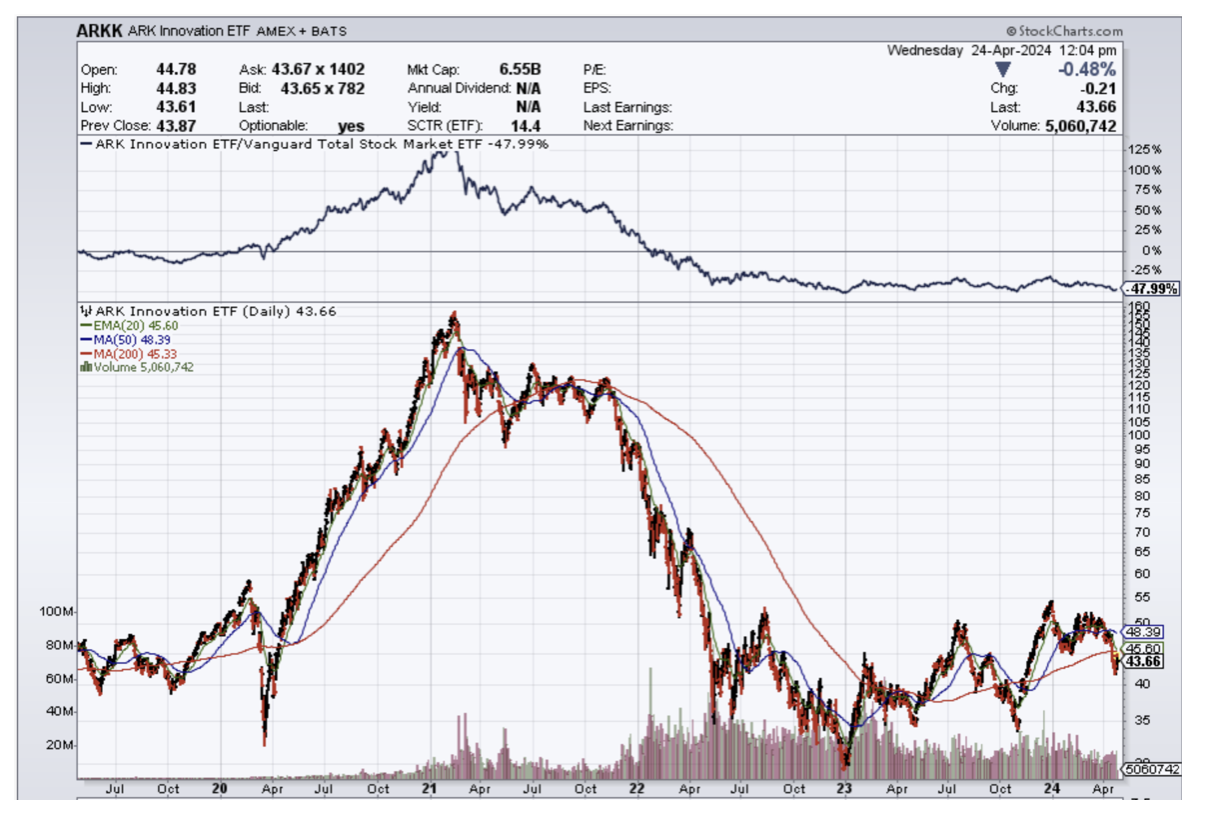
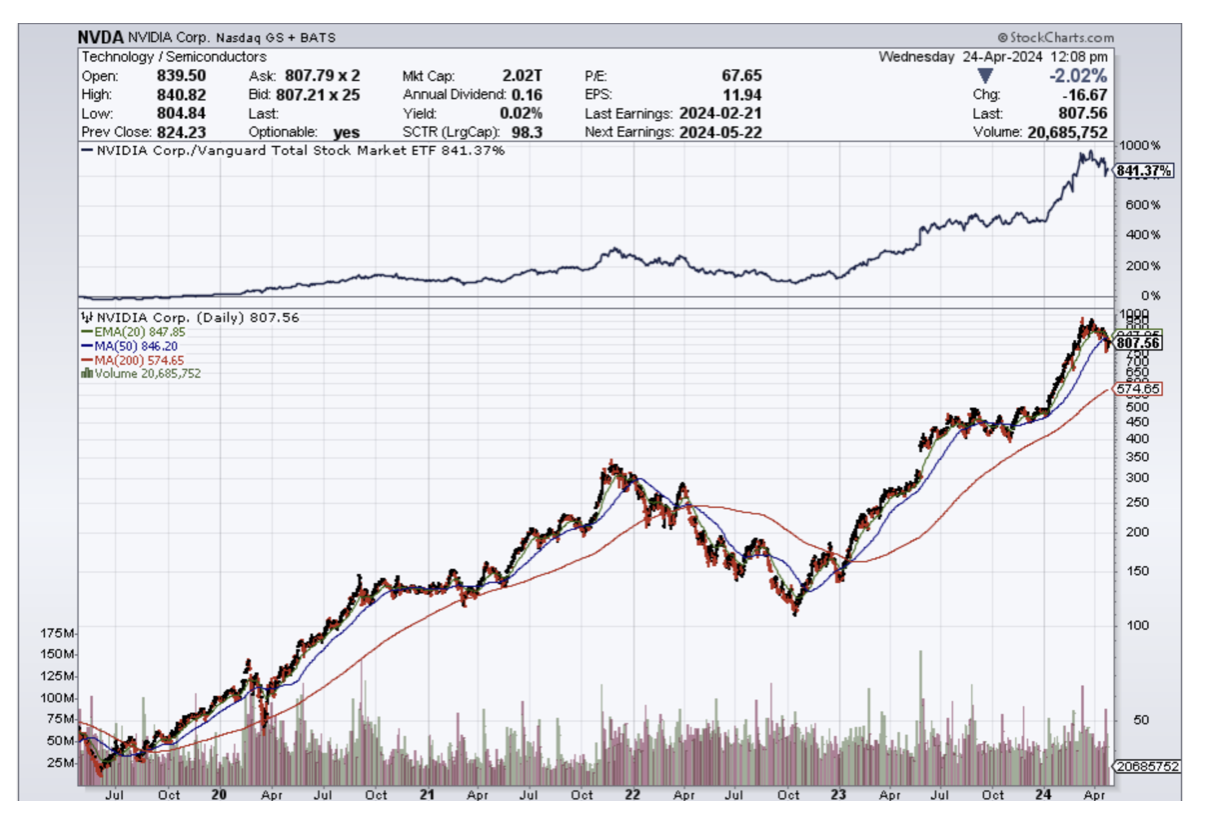
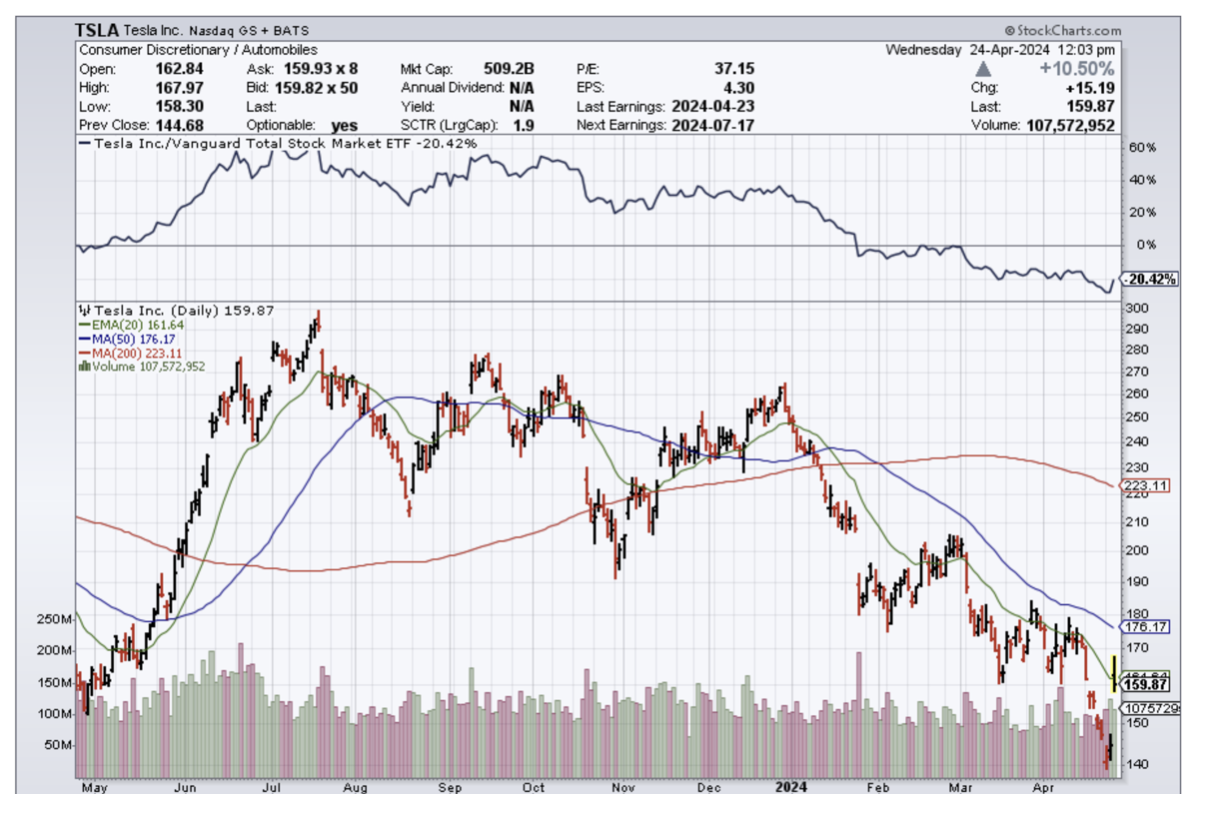
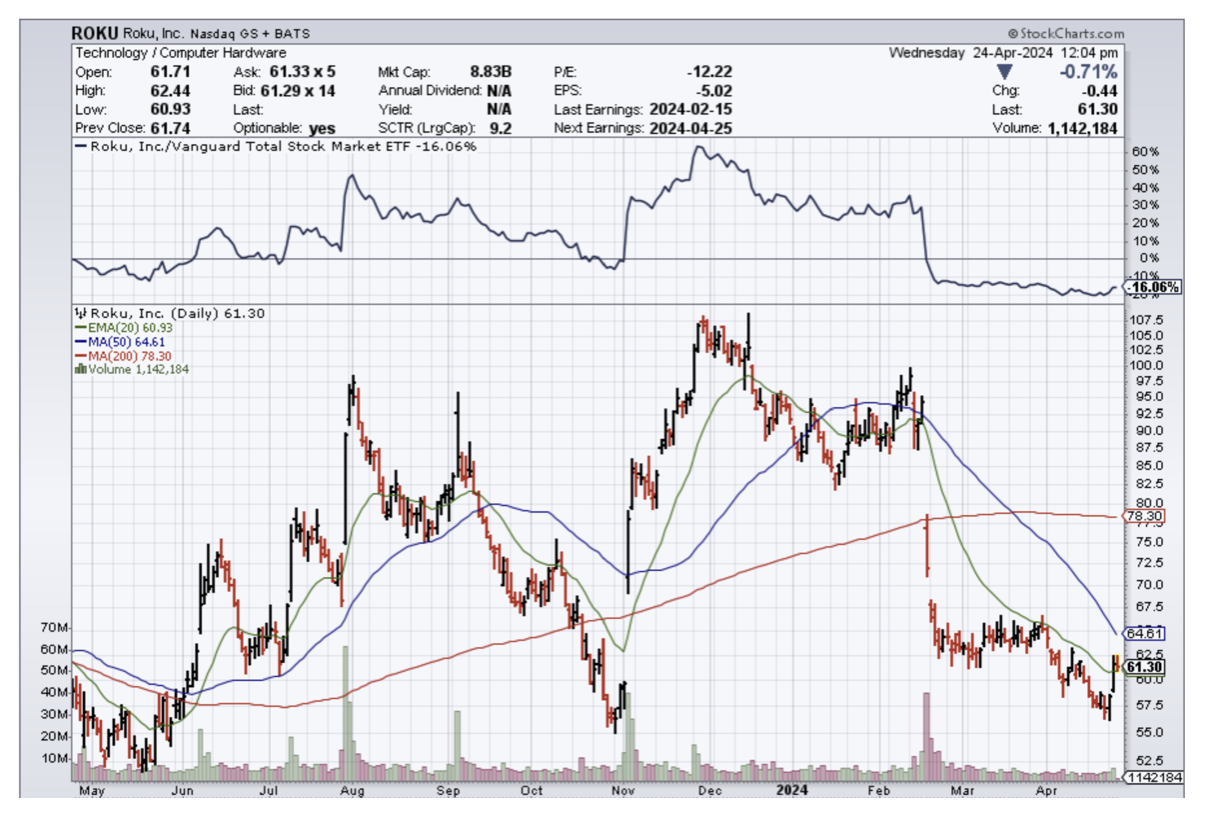
Global Market Comments
April 18, 2024
Fiat Lux
Featured Trade:
(APRIL 16 BIWEEKLY STRATEGY WEBINAR Q&A),
(GLD), (GLD), (GE), (GM), (NVDA), (TSLA), (ARKK), (MS), (GS)

Below please find subscribers’ Q&A for the April 16 Mad Hedge Fund Trader Global Strategy Webinar, broadcast from Key West, Florida.
Q: If Elon Musk died, would you sell Tesla (TSLA)?
A: Yes. A lot of Tesla’s success is because Elon Musk alone can push people to do the impossible, only because he’s the largest shareholder and therefore is in complete control of all of the dozen or so Tesla major operations. Certainly, nobody else would be crazy enough to invest in so many businesses at once, like SpaceX, like the storage business, SolarCity, Nueralink, and AI, and get away with it. But then, very few people are willing to work 24 hours/day, 7 days/week either. Musk is also the world’s greatest risk-taker with his own money. So Elon Musk is a large part of the Tesla added value; if you take him away, it just becomes another General Electric (GE) (or worse, General Motors (GM)).
Q: Are geopolitical risks in the Middle East a threat to the stock market?
A: No. Several people commented in my Monday morning letter that I didn’t even mention the Middle East, and that’s because it has no market impact beyond a day. Nobody could care less. All we can do is feel sorry for all the civilians who are dying on both sides. In my lifetime, every geopolitical crisis has been a “BUY” in the stock markets, and in all risk assets. In the old days, it used to take them a month or two to figure it out, now it takes a few hours, so you just get one down day, everybody buys into that low, and markets continue up. Far more impact on the market these days is the inflation rate because that's what the Fed is looking at and they’re the ones who have their hands on the interest rate throttle. And even if inflation does stay where it is now, they’ll still have to eventually cut rates because otherwise the half of the economy that is dependent on interest rates will be destroyed. The other technology half doesn’t really care because they’re all positive cash flow, so they benefit from high interest rates.
Q: How do you select your spread prices?
A: I look at the bid-offer spread in the market, I send you a screenshot of that bid-offer spread, and then I move 5 or 10 cents off the bid side of the market. Normally, if you tighten the spread at the bid side, you will get filled on that order, and if you don’t, just leave it in there, and the second the market trends down you’ll get filled, or if you leave it the next day you’ll get filled. Remember that the second I put out a trade alert, algorithms take it up to the offered side of the market, but algorithms have to go 100% cash by the end of the day and dump all their positions, so if you leave an order in until the end of the day, often you get filled unless there’s been a major market move.
Q: Will gold continue higher?
A: Yes it will. For a start, it isn’t selling off with other risk assets in the recent correction. (GLD) only dropped $10 from an intra-day high of $225, and even though the Fed may not be cutting interest rates today, their next move will be a cut, even if that's in 3, 6, or 9 months. So, people are buying gold for that reason. Also, historically, it’s cheap relative to other asset classes such as stocks and bonds. On top of that, you have China and Russia buying record amounts of gold to bypass the Western financial system. They’ve done that for many years and it’s finally created a big short position on the market. Oh, and they’re not making gold anymore—the amount of gold being mined has been declining now a decade as the costs of mining gold rise.
Q: Why is inflation staying so high?
A: One of the reasons is that there were huge gaps in the supply/demand system due to COVID-19 still being addressed three years after the fact. That created price spikes and all kinds of unexpected consequences. Also, a lot of the government stimulus, or “COVID money,” hasn’t been spent yet; it’s still out there at the contract level and is still being committed. Even if you signed a contract two years ago, it can take two years to get a major construction project started with the planning, design, etc. Rule of thumb in dealing with all governments: everything happens slowly. All over the country, there are construction projects starting using the Federal stimulus money, so that also creates inflation when you have $3 trillion in new spending. That’s what your local traffic jam is all about. Here in Key West, they are rebuilding the Atlantic side waterfront, and that has to cost billions of dollars, far beyond what the locals could afford. But the major component of inflation, which is labor, is flatlining now. We are seeing a lot of one-time-only increases in pay going through, and then there won’t be any after that for a long time. Rising rents are a big problem now.
Q: Can you explain the market timing index?
A: The profit predictor updates itself every time we do a mouse click for all the different algorithms to kick in and generate a new number, and every piece of research we send out has an updated market timing index in it. So, if you get all of our services with Mad Hedge Hot Tips, the Global Trading Dispatch, the Trade Alerts, etc., we’re sending out at least ten updates a day for the market timing index. Suffice it to say, the more services you buy, the more updates you get on the market timing index.
Q: Will (USO) oil sell off on peace in the Middle East?
A: Well actually we’re seeing that today—we’re getting a selloff on the highs after Israel did not launch a tit-for-tat retaliation on the missile attacks from Iran. On the day they do, you will see prices go back up again. But the goal here is to dial back responses. The rule of thumb in defense for the US is: when somebody attacks you, you attack back with twice the force. That way you discourage any further retaliation from the enemy. That certainly is how our nuclear response is designed, and it’s pretty successful because only the US has the ability to execute unlimited increases in military response.
Q: Is Starlink a Tesla company?
A: Starlink is owned by SpaceX, which is an independent company owned by Elon Musk and several venture capitalists, but of course, Elon Musk is the largest shareholder. Space X is worth about $180 billion these days with several large government contracts. It’s why Elon Musk became a US citizen (foreigners are not allowed to launch our top-secret military satellites).
Q: How far-in-the-money do you go in your spread purchases?
A: It’s totally driven by the volatility of the individual stock. If you have a boring stock, you only go 5% in the money in order to earn enough money to make it worth it. If you have high volatility stocks like Tesla (TSLA) or Nvidia (NVDA) which both have options implied in the mid-40%s, you can get away with 20% in-the-money and still make a decent profit one month out. As you can tell, I tend to gravitate towards the highest volatility stocks in the market that are liquid.
Q: Will the 10% staff cut at Tesla hurt the stock?
A: Staff cuts mean bigger profits because you’re reducing the overhead by 10%. Staff cuts in almost every other technology company have been positive for the stocks for this reason. So I would say no, and Tesla has bigger problems than staff cuts like the nuclear winter going on in EV sales.
Q: Why won’t Nvidia (NVDA) go down?
A: Well, it’s because it has such a lead against all competitors. And, you know, in any other industry you’d just go hire the staff or buy the division in order to get it to hold in the market—you can’t do that with Nvidia because they’re all rich and have stock options priced at the $1 or $2 level to lock them in for life. The CEO Jensen Huang is now the sixth richest man in the world.
Q: Why have bonds failed to rally with the rest of the market?
A: Because the Fed isn’t cutting interest rates any time soon and bonds are dependent on the level of interest rates, which means they will rise once the Fed does cut.
Q: Should I buy Goldman Sachs Group (GS) on their great earnings report?
A: Yes, trading volumes look good for the rest of the year and that is how brokerage houses make their crust of bread. Buy Morgan Stanley (MS) too. It’s a better quality company with less dependence on trading revenues and more on fee income. After all, they hired me!
Q: Should I buy Cathie Woods’s Ark Innovation ETF (ARKK) fund here?
A: Absolutely not. Highly leveraged funds and the most leveraged stocks are the last thing you buy on market tops. That is a market bottom play, and the last real market bottom we had was in October.
To watch a replay of this webinar with all the charts, bells, whistles, and classic rock music, just log in to www.madhedgefundtrader.com, go to MY ACCOUNT, select your subscription (GLOBAL TRADING DISPATCH, TECHNOLOGY LETTER, or Jacquie's Post), then click on WEBINARS, and all the webinars from the last 12 years are there in all their glory
Good Luck and Stay Healthy,
John Thomas
CEO & Publisher
The Diary of a Mad Hedge Fund Trader
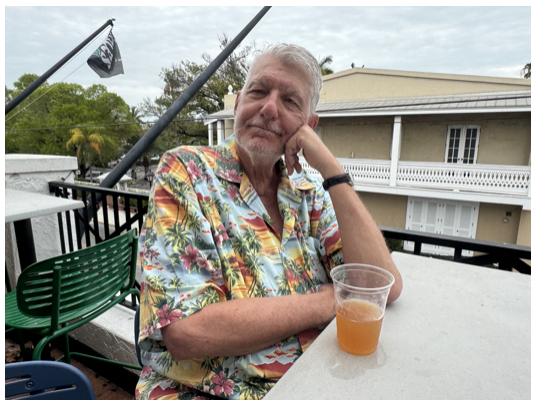
2024 Key West Thinking of the Next Trade Alert
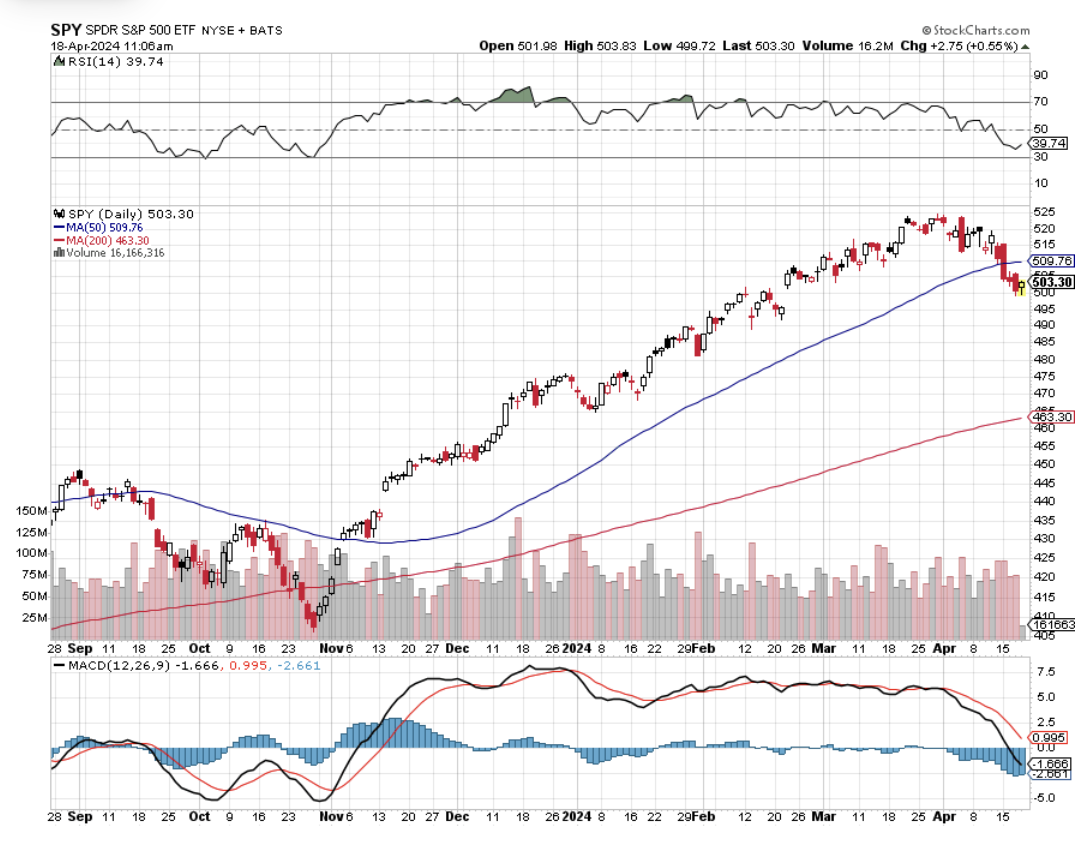
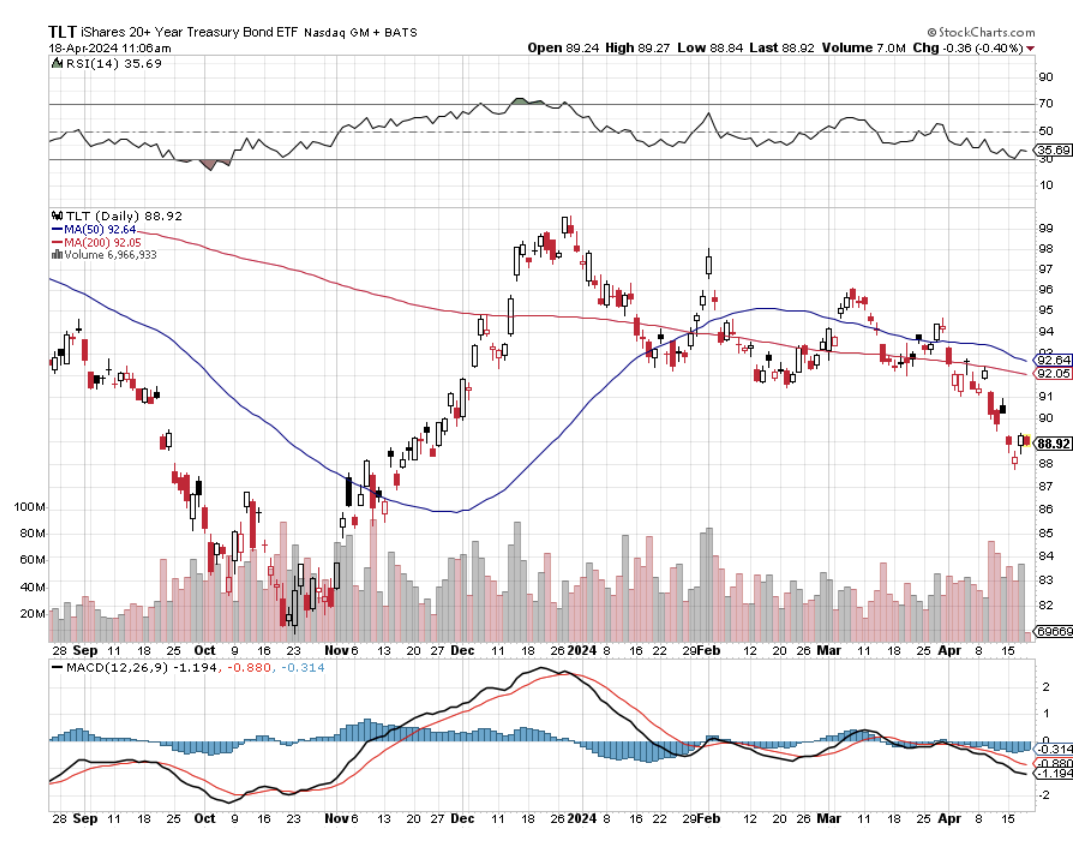
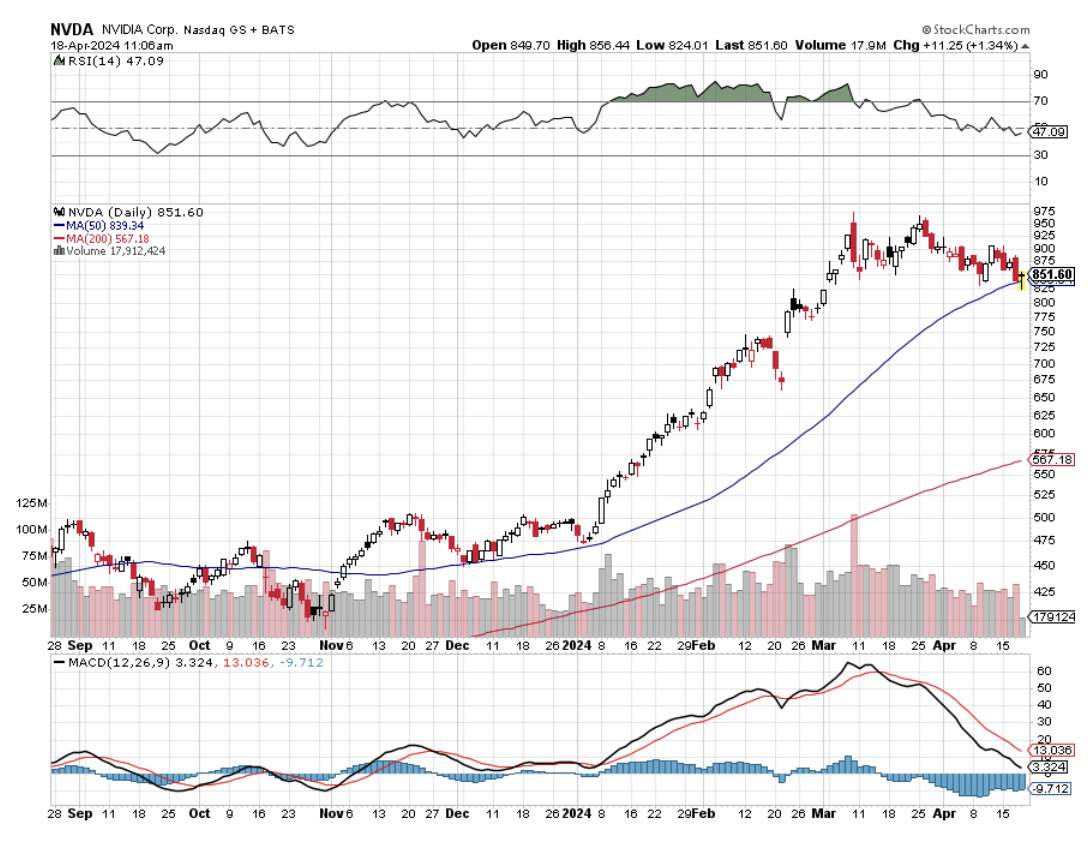
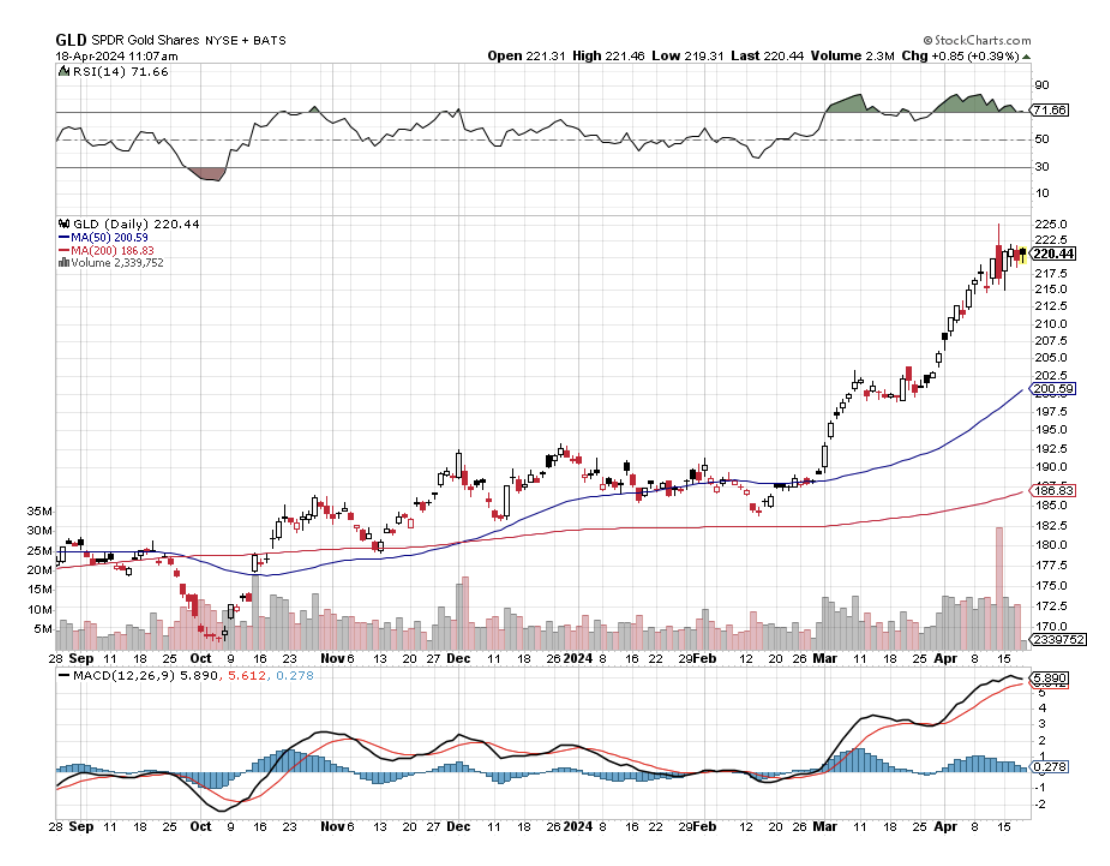
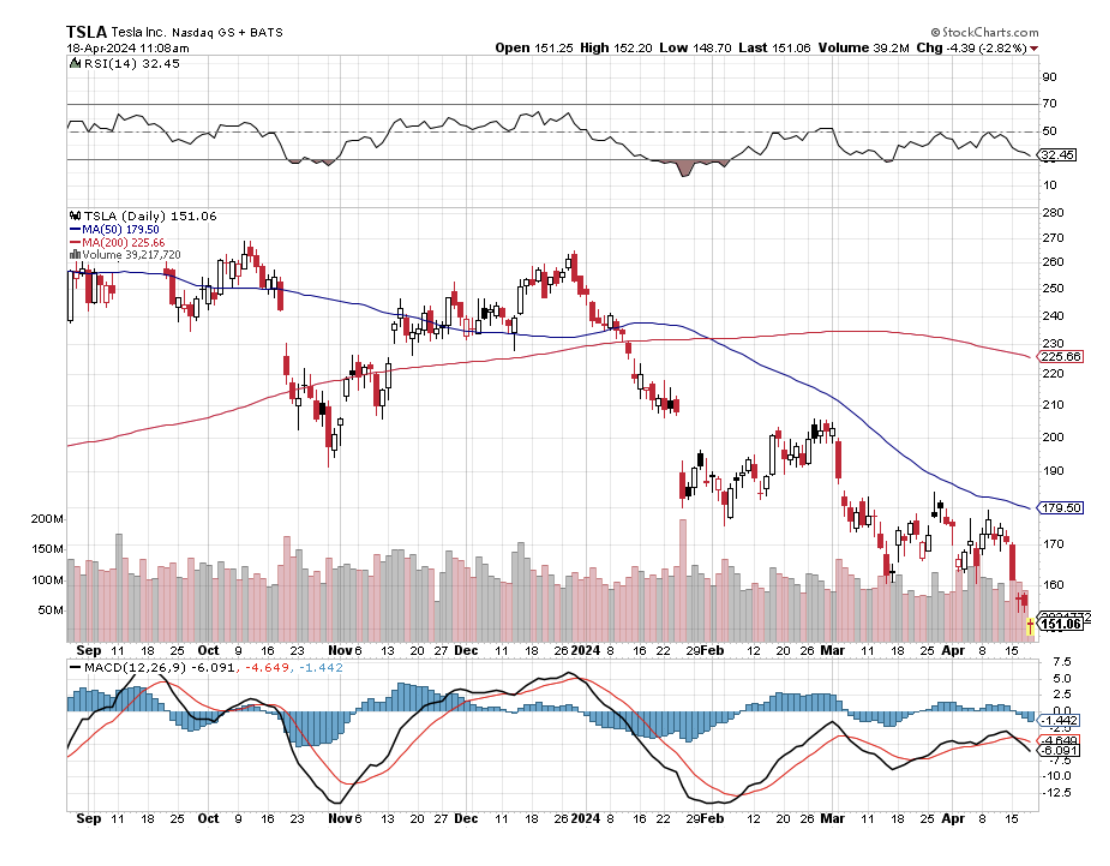
Global Market Comments
March 20, 2023
Fiat Lux
Featured Trade:
(MARKET OUTLOOK FOR THE WEEK AHEAD, or QE IS BACK!)
(SPY), (BITCOIN), (GLD), (SLV), (ARKK), (NVDA), (AAPL), (GOOGL), (META), (SCHW), (MS), (FRC), (TLT), (KBWH)

CLICK HERE to download today's position sheet.
Remember the endless flood of the money supply that went on for a decade, floating all boats?
It's back!
One need look no further than the Fed balance sheet, which ratcheted up a breathtaking $297 billion last week. That offsets three months worth of quantitative tightening if it even still exists.
This is further confirmed by the classic QE asset classes, which saw their best week in a year. Bitcoin jumped by 30%, gold (GLD) gained 8%, silver (SLV) popped 12%, and technology stocks went on a tear. Even bonds did well, with the (TLT) up $8.00 from the previous week’s low.
Big tech stocks like (NVDA), (AAPL), (GOOGL), and (META) are now seen as the new “safe “stocks, thanks to their gigantic balance sheets and immense cash flows. Tech funds have seen net inflows for the past four consecutive weeks, delivering the largest new investment in three years. The ARK Innovation Fund (ARKK) saw its biggest inflows since the 2021 peak.
It's the regional banking crisis that is reverting the Fed to its old habits, all prompted by the mindless management of Silicon Valley Bank. All California assets were dumped as California was about to fall into the ocean, like Charles Schwab (SCHW), Bank of America (BAC), and First Republic Bank (FRC).
That puts the Fed in a quandary, which renders its interest rate decision on Wednesday, March 22 at 2:00 PM EST, because the last thing you do in a financial crisis is raise interest rates. That’s what the Fed did in 1929, extending the Great Depression from 10 days to 10 years.
My bet is that they raise by 25 basis point one more time because it’s already in the mail. The regional banking crisis has pulled forward any recession and therefore the recovery.
After that, there will be no interest rate rises for a decade, which the Fed may hint at in its statement and the following press conference. The cuts will start in June and continue rapidly after that. That’s when the economic data catch up with the reality that is happening right now, which is hugely deflationary.
(NVDA) and (TSLA) already know this, which are rising sharply on Friday.
The action certainly caught the attention of the US Treasury, which seemed willing to jump in with guarantees at the drop of a hat. There has been a massive flight of capital from the heartland to the coasts where the top 20 “too big to fail” banks live.
It’s another example of an industry deregulating itself out of existence, which obtained looser capital requirements after heavy lobbying in 2018. At one point, JP Morgan bank, the safest of the safe, was turning down new account applications. This means that the trade of the decade is setting up for the banks. In the wake of the 2008 financial crisis, the Invesco Bank ETF (KBWB) rose 75% in a year. I expect the same to happen this time around. It has already plunged by 30% in 2023, so it has to rise by 50% just to get back to where it was in January, but with bank deposits now guaranteed and more safeguards in place.
And if you are worried about hidden unrealized losses on bank balance sheets, I list below the safest banks ranked by capital ratios NET of losses when marked to market.
14.5% Goldman Sachs (GS)
13.4% Morgan Stanley (MS)
11.5% JP Morgan Bank (JPM)
11.3% Citigroup (C)
8.7% State Street
5.9% Bank of America (BAC)
No surprise that (GS) and (MS) is at the top where the mark-to-market culture is strong. A strong dose of regulation from the SEC helps too. (BAC) takes a big hit because of the largest holdings of low-yielding mortgages which can’t be marked to market unless they are sold or defaulted.
The crisis brought the traditional recession indicators out of the closet last week. A big one is crude oil prices, which hit a 2 ½ year low at $65 a barrel. It turns out that not only banks but oil producers are hurt by high interest rates as well. Some 120 million barrels have gone into storage in the beast nine months and the market is oversupplied by 300,000 barrels a day.
Only OPEC Plus can put in a floor by cutting production, which they are loathed to do as it brings immediate spending cuts. Or the greatest oil trader in history, Joe Biden of Delaware, can cover his short in the Strategic Petroleum which he sold at $90 last year. You may have to wait for a future Republican administration for that to happen.
While markets crashed, investors have been jumping out of windows, the world appeared to be ending, and the rain continuing incessantly, Mad Hedge continued on up tear with March up +5.61%.
My 2023 year-to-date performance is now at an eye-popping +31.37%. The S&P 500 (SPY) is up +2.63% so far in 2023. My trailing one-year return maintains a sky-high +87.76% versus -15.55% for the S&P 500.
That brings my 15-year total return to +628.56%, some 2.87 times the S&P 500 (SPX) over the same period. My average annualized return has recovered to +47.76%, another new high.
At the market lows, I covered shorts in my Tesla and March NVIDIA positions. I religiously adhered to my stop loss discipline, stopping out of my April short in NVIDIA (NVDA) when the melt-up ensued, my only remaining equity short. I also established a new short in (TLT) at the market high, my first since August.
Silicon Valley Bank fails to sell, but the FDIC stepped in to guarantee all deposits. The FDIC took over Signature Bank in New York as well. If they hadn’t, there would be lines snaking out the doors of every small bank in America Monday morning. The cost is being born by steeper deposit insurance premiums for the banking industry, which will no doubt cause some grumbling. There are 100 banks that would leap to buy Silicon Valley Bank to gain a franchise in the world’s fastest growing technology center. They just need a few hours to get a handle on the bank’s loan portfolio, which only the former management really understand. Buy banks and brokers on dips (SCHW).
Is Platinum the Precious Metals Play of 2023? I am told by the insiders who know that platinum (PPLT) could be the big precious metals play of 2023. The white metal has become the principal metal used in the manufacture of catalytic converters for conventional internal combustion cars of which 15 million a year is still made in the US. There is rising demand for hydrogen fuel cells and the green hydrogen movement. The world’s second largest producer of platinum is Russia, whose supplies have been cut off. As a result, there is expected to be a 556,000-ounce shortage this year after two years of surpluses.
Say Goodbye to the 50 Basis Point Rate Hike, at the Fed meeting on March 22 in the wake of a regional banking Crisis. It’s now a quarter point….or nothing at all. In 48 hours, we have gone from “higher rates for longer” to “maybe the next rate rise is the last one.” Tech stocks are buying it after holding up incredibly well. Buy tech and big banks on dips (JPM), (BAC), (C), (SCHW).
Core Inflation Comes in Moderate, up 0.4% and 0.5% without food and energy. That is a 6.0% YOY rate, down from the 2023 high of 8.7%. Stocks extended a 300-point rally on the news. Inflation has been running at a 3.5% annual rate for the past four months, my yearend target.
Mortgage Rates Dive, off the back of a three-day, $8.00 rally in the bond market. Mortgage rates plunged by 50 basis points to 6.50% and may have more to go. Will this kick off the spring residential real estate market?
Gold (GLD) Breaks Out, crossing a key technical level and setting the options market on fire. Some gold minders saw options volume up 400%. Did the regional banking crisis put the top in interest rates, which have been weighing heavily on gold? Or maybe it’s just an old fashioned flight to safety triggered by the financial crisis. It could be presaging a global economic recovery and a coming commodity boom. (GOLD) LEAPS on the way.
Ron Baron Loaded the Boat with Charles Schwab (SCHW) Shares on Friday, as all the smart money did, including Mad Hedge. My old friend was also an early investor in Tesla (TSLA) and is now one of the largest outside shareholders. When someone offers you a dollar for 40 cents, you take it!
Swiss National Bank Steps in to Bail Out Credit Suisse, taking pressure off US market. I knew they would come in as I was a director of UBS for a year, The Swiss take care of their own. More importantly, the rolling global bank crisis has put the fear of God into the Fed, meaning that the 25 basis point hike next week may be the last for a decade. Buy “RISK ON”, especially banks.
Europe Raises Interest Rates by 50 Basis Points, catching up with the US. It’s an overreaction given the fragility of the banking system. The markets didn’t like the move. Europe has inflation at 2% higher than the US so they really had no choice
Weekly Jobless Claims Drop to 192,000, a surprising fall. The worker shortage continues unabated. It’s the biggest decline since July. If the Fed were looking for a reason to continue quantitative tightening this is it.
First Republic Bank is for Sale, the next bailout target. The mere fact that it is based in California is the problem, which many investors now apparently believe is about to break off of the North American Continent and fall into the Pacific Ocean. You never see a bank with $70 billion in cash and equivalents get in trouble. Morgan Stanley (MS) and JP Morgan are thought to be in the bidding. A group of banks deposited $30 billion into (FRC) to firewall the rest of the banking system.
My Ten-Year View
When we come out the other side of the recession, we will be perfectly poised to launch into my new American Golden Age, or the next Roaring Twenties. The economy decarbonizing and technology hyper accelerating, creating enormous investment opportunities. The Dow Average will rise by 800% to 240,000 or more in the coming decade. The new America will be far more efficient and profitable than the old.
Dow 240,000 here we come!
On Monday, March 20, there are no data points of note.
On Tuesday, March 21 at 7:00 AM, the Existing Home Sales are announced.
On Wednesday, March 22 at 7:00 AM, the Federal Reserve Open Market Committee announces its interest rate decision. A hike of 25 basis points is in the market. The published statement and following press conference will be the most important of the year, indicating whether they recognize the seriousness of the regional banking crisis and are now leaning hawkish or dovish.
On Thursday, March 23 at 8:30 AM, the Weekly Jobless Claims are announced.
On Friday, March 17 at 8:30 AM, the Durable Goods are released.
As for me, I recall my last trip around the world in 2018. I took the trip because I feared climate change would soon make visits to the equator impossible because of intolerable temperatures and the breakdown of civilization. As it turned out, the global pandemic came six months later, making such travel out of the question for two years.
I beat Phileas Fogg by 55 days, who needed 88 days to complete his trip around the world to settle a gentleman’s bet. But then, he had to rely on elephants, sailing ships, and steam engines to complete his epic voyage, or at least, the one imagined by Jules Verne.
I actually took a much longer route, using a mix of Boeings and Airbuses to fly 80 hours over 40,000 miles on 18 flights through 12 countries in only 33 days. Incredibly, our baggage made it all the way, rather than see its contents sold on the black markets of Manila, New Delhi, or Cairo.
It was a trip around the world for the ages, made even more challenging by dragging my 13 and 15-year-old girls along with me. I have always considered my most valuable asset to be the trips I took to Europe, Africa, and Asia in 1968. The comparisons I can make today some 55 years later are nothing less than awe-inspiring. I wanted to give the same gift to them.
It began with a 12 ½ hour flight from San Francisco to Auckland, New Zealand. Straight out of the airport, I rented a left-hand drive Land Rover and drove three hours to high in the steam-covered mountains of Rarotonga where we were dinner guests of a Māori tribe. To earn my dinner of pork and vegetables cooked underground, I had to dance the haka, a Māori war dance.

The Haka
Of course, with kids in tow, a natural stop was the Hobbit Village of Hobbiton 1½ hours outside of Auckland. I figured the owners of the idyllic sheep farm were earning at least $25 million a year showing tourists the movie set.
In all, I put 1,000 miles on the car in four days, even crossing New Zealand’s highest mountain range on a dirt road. The thick forests were so primeval my daughter expected to see a dinosaur around every curve. We reached our southernmost point at Mt. Ruapehu, a volcano used as the inspiration for Mt. Doom in Peter Jackson’s Lord of the Rings.
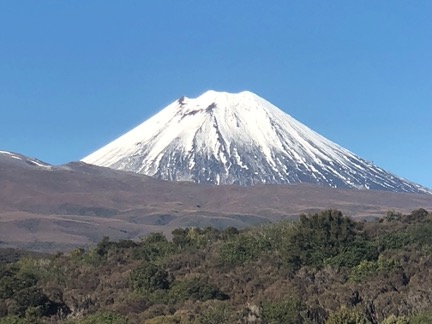
The Real Mount Doom
The focus of the Australia leg were ten strategy lectures which I presented around the country. I was mobbed at every stop, with turnouts double what I expected. The Mad Hedge Fund Trader and the Mad Hedge Technology Letter picked up 100 new subscribers in the Land Down Under in five days.
Maybe it was something I said?
My kids’ only requirements were to feed real kangaroos and koala bears, which we duly accomplished on a freezing cold morning outside Melbourne. We also managed to squeeze in a tour of the incredible Sydney Opera House in between lectures, dashing here and there in Uber cabs.
I hosted five Mad Hedge Global Strategy Luncheons for existing customers in five days. The highlight was in Perth, where eight professional traders and I enjoyed a raucous, drunken meal. They had all done well off my advice, so I was popular, to say the least. Someone picked up the tab without me even noticing.


After that, it was a brief ten-hour flight to Manila in the Philippines, with a brief changeover in Hong Kong, where massive protest demonstrations were underway. Ever the history buff, I booked myself into General Douglas MacArthur’s suite at the historic Manila Hotel. The last time I was here, I interviewed President Ferdinand Marcos and his lovely wife Imelda. After a lunch with my enthusiastic Philippine staff and I was on my way to the airport.

I took Malaysian Airlines to New Delhi, India, which has lost two planes over the last five years and where the crew was definitely on edge. I asked why a second plane was lost somewhere over the South Indian Ocean and the universal response was that the pilot had gone insane. Security was so tight that they confiscated a bottle of Jamieson Irish Whiskey that I had just bought in duty free.
India turned out to be a dystopian nightmare. If climate change continues, this is your preview. With temperatures up to 120 degrees in 100% humidity, people were dying of heat stroke by the hundreds. Elephants had to be hosed down to keep them alive. It was so hot you couldn’t stray from the air conditioning for more than an hour. The national radio warned us to stay indoors.
In Old Delhi, the kids were besieged by child beggars pawing them for food and there were mountains of trash everywhere. In the Taj Mahal, my older daughter passed out and we had to dump our remaining drinking water on her to cool her down and bring her back to life. We spent the rest of the day sightseeing indoors at the most heavily air-conditioned shops.
If global temperatures rise by just a few more degrees, you’re going to lose a billion people in India very soon.

On the way to Abu Dhabi, we flew directly over the tanker war at the Straits of Hormuz, one of my old flight paths during my Morgan Stanley days. It was too dusty to see any action there. We got a much better view of Sinai and the Red Sea, which, I told the kids, Moses parted 5,000 years ago (they’ve seen Charlton Heston in The Ten Commandments many times).

The Red Sea
Upon landing at Cairo, Egypt’s ever-vigilant military intelligence service immediately picked me up. Apparently, I was still in their system dating back to my coverage of Henry Kissinger’s shuttle diplomacy for The Economist in 1976. That was all a long time ago. Having two kids with me meant I was not there to cause trouble, so they were very friendly. They even gave us a free ride to the downtown Nile Hilton.
After India, Cairo, and the Sahara Desert were downright pleasant, a dry and comfortable 100 degrees. We did the standard circuit, the pyramids, and the Sphynx followed by a camel ride into the desert.

If you are the least bit claustrophobic, don’t even think about crawling into the center of the Great Pyramid on your hands and knees as we did. I was sore for two days. We spent the evening on a Nile dinner cruise, looking for alligators, entertained by an unusually talented belly dancer.
The next stage involved a one-day race to Greece, where we circled the Acropolis in all its glory, and then argued with a Greek taxi driver on how to get back to the airport. We ended up taking an efficient airport train, a remnant of the 2000 Athens Olympics. If impoverished and bankrupt Athens has such great airport train, why doesn’t New York or San Francisco?

It was a quick hop across the Adriatic to Venice Italy, where we caught an always exciting speed boat from the Marco Polo to our Airbnb near St. Mark’s Square. We ran through the ancient cathedral and the Palace of the Doges, admiring the massive canvases, the medieval weaponry, and of course, the dungeon.
One of the high points of the trip was a performance of Vivaldi’s Four Seasons in the very church it was composed for. A ferocious thunderstorm hit, flooding the plaza outside and causing the lead violinist’s string to break, halting the concert (rapid humidity change I guess).
When we got home with soggy feet, the Carabinieri had cordoned off our block with police tape because a big chunk of our 400-year-old roof had fallen into the street. It taxed my Italian to the max to get into our apartment that night. The Airbnb host asked me not to mention this in my review (I didn’t).
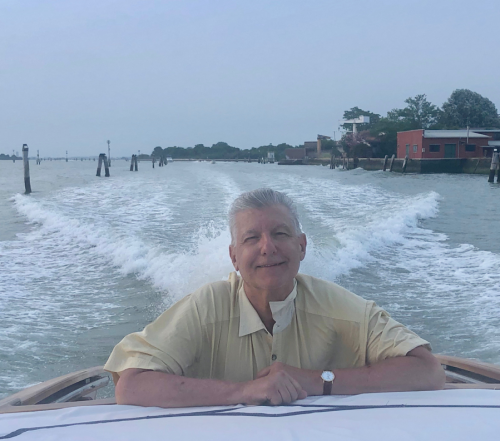
The next day brought a circuitous trip to Budapest via Brussels. Budapest was a charm, a former capital of the Austria-Hungarian Empire and the architecture to prove it. The last time I was here 55 years ago, the Russian Army was running the place and it was grim, oppressive, and dirty.
Today, it is a thriving hot spot for Europe’s young, with bars and night clubs everywhere. Dinners dropped from $150 in Venice to $30. We topped the night with a Danube dinner cruise with a folk dancing troupe. I’m telling you, you can live there like a king for $1,000 a month.

Visiting the Golden Age in Budapest
The next morning, we drew closer to our final destination of Switzerland. A four-hour train ride brought us to my summer chalet in Zermatt and some much-needed rest. At the end of a long valley and lacking any cars, Zermatt is one of those places where you can just give the kids 50 Swiss francs and tell them to get lost. I spent mornings hiking up from the valley floor and afternoons getting caught up on the markets and my writing.
There’s nothing like recharging my batteries in the clean mountain air of the Alps. The forecast was rain every day for two weeks, but it never showed. As a result, I ended up hiking ten miles a day to the point where my legs were made of lead by the end.
The only downer was watching helicopters pick up the bodies of two climbers who fell near the top of the Matterhorn. As temperatures rise rapidly, the ice holding the mountain together is melting, leading to a rising tide of fatal accidents.
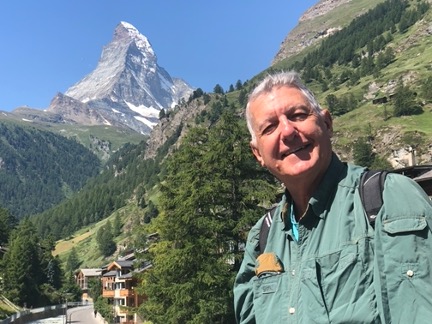
I caught my last flight home from Milan. Anything for one more great dinner in Italy, which I enjoyed in the Galleria. At the train station, I chatted with a troop of Italian Boy Scouts in blue uniforms headed for the Italian Alps. The city was packed with Chinese tour groups, and there was a one-month wait to buy tickets for Leonardo DaVinci’s The Last Supper. Another Airbnb made sure I stayed up all night listening to the city’s yellow trolleys trundle by.

Finally, an 11-hour flight brought me back to the City by the Bay. Thanks to two sleeping pills of indeterminate origin I went to sleep over England and woke up over Oregon, preparing for a landing. It seems that somewhere along the way I proposed marriage to the Arab woman sitting next to me, but I have no memory of that whatsoever. At least that’s what the head flight attendant thought.
I am now planning this summer trip. After the Queen Mary and the Orient Express should I climb the Matterhorn again? Or should I summit Mount Kilimanjaro in Africa first? No transatlantic trip should ever be wasted. And I have to get home in time to join a 50-mile hike with the Boy Scouts in New Mexico and then cart two kids off to college.
What a great problem to have.

Good Luck and Good Trading,
John Thomas
CEO & Publisher
The Diary of a Mad Hedge Fund Trader
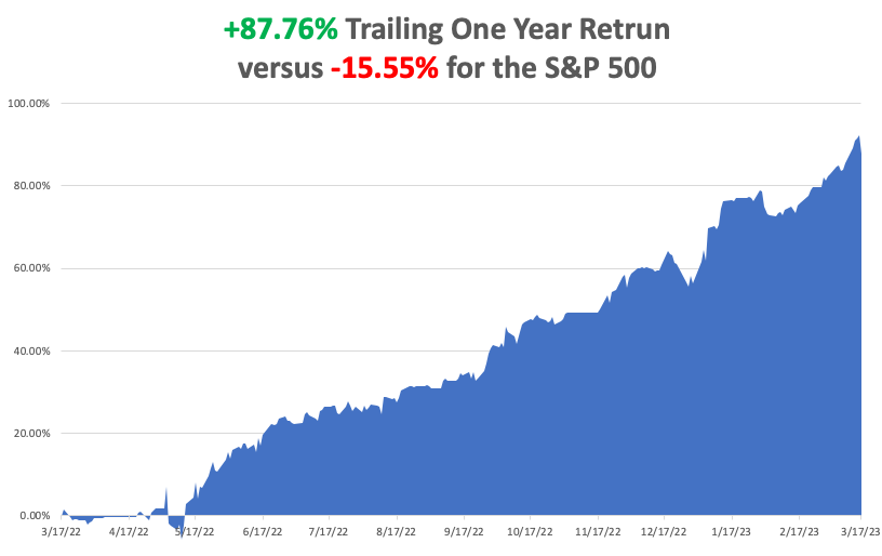
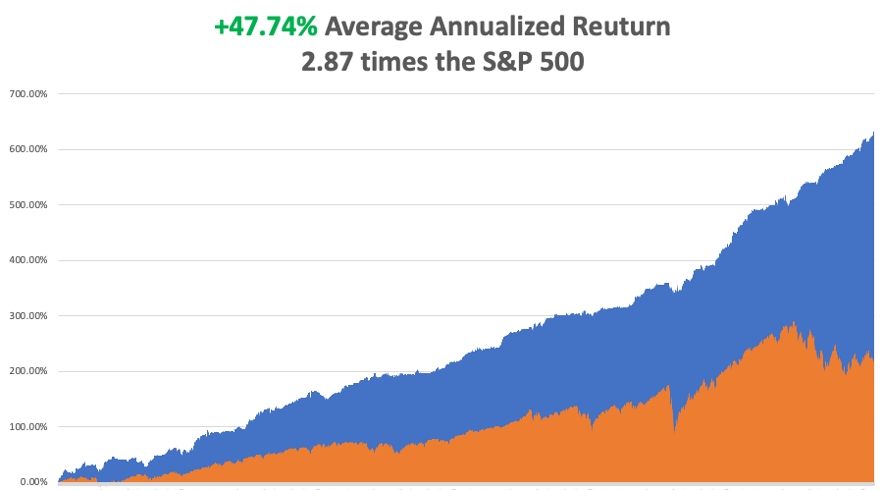
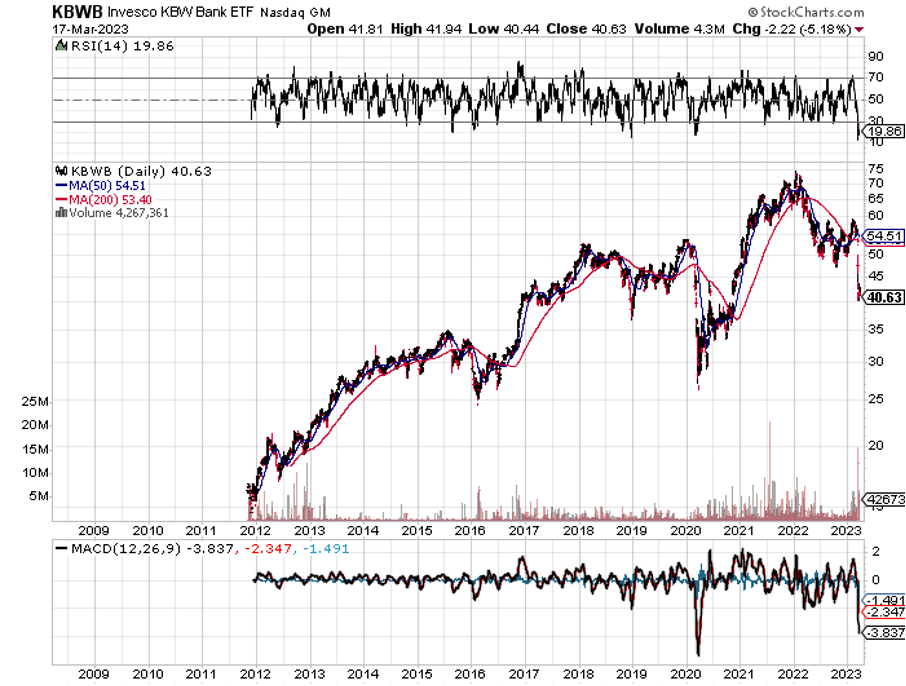
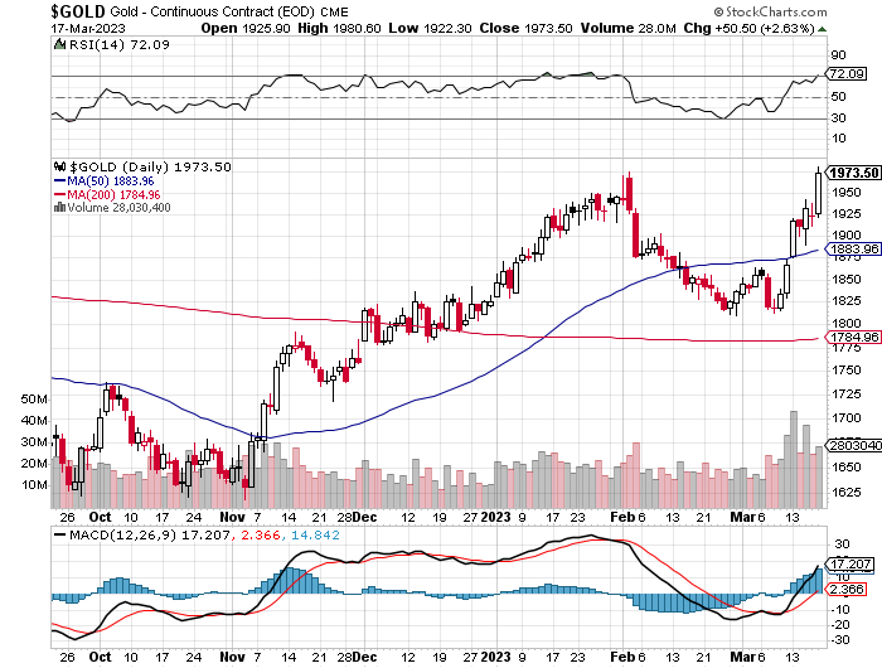
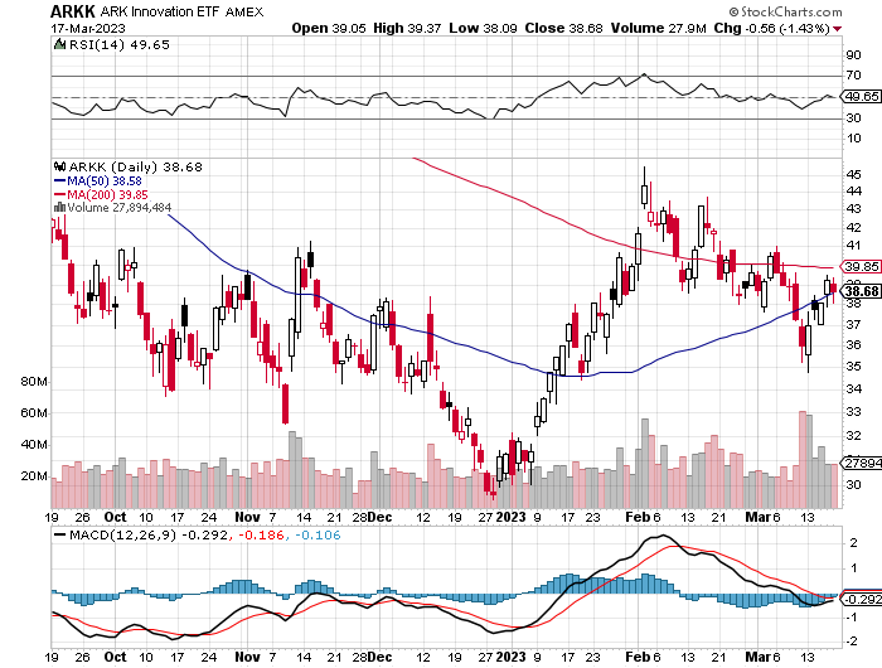
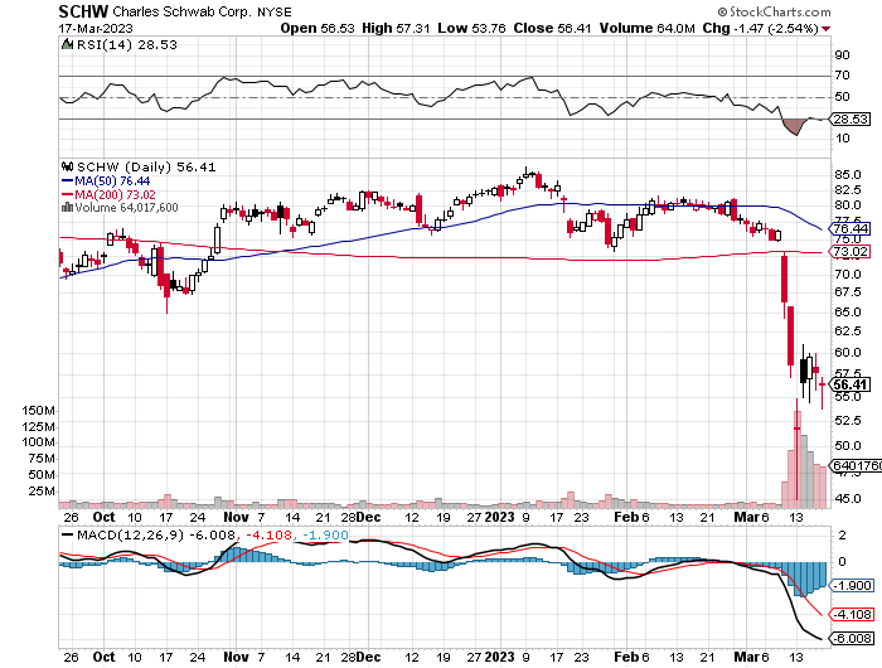
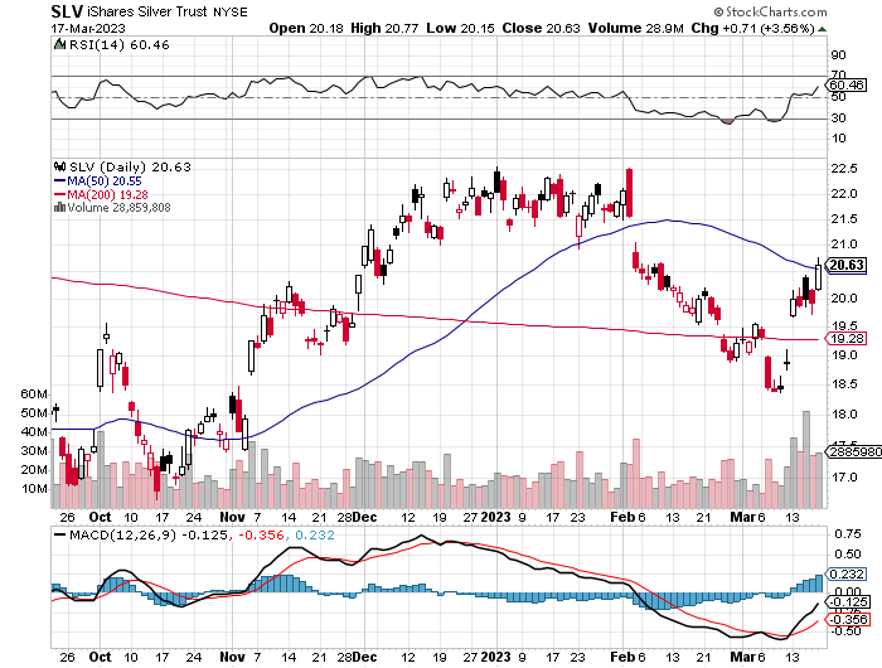
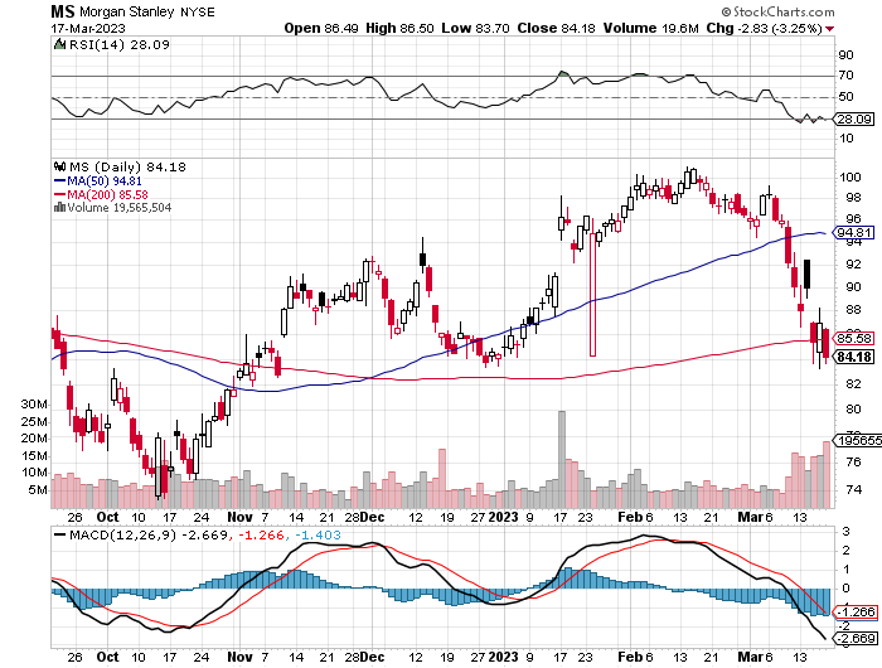

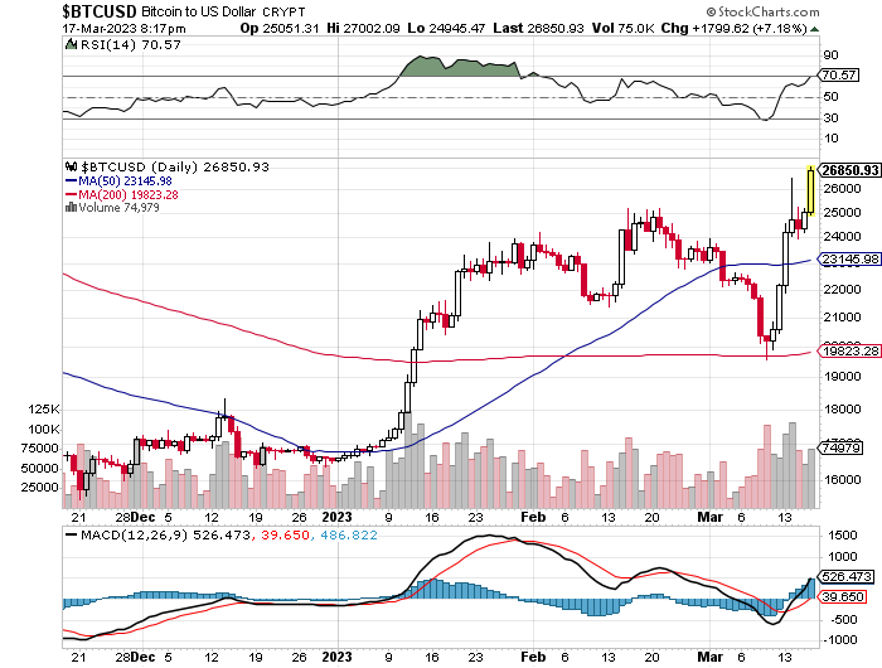
Mad Hedge Technology Letter
March 17, 2023
Fiat Lux
Featured Trade:
(HIGHLY BULLISH FOR TECH STOCKS)
(AAPL), (GOOGL), (ARKK)

Up to $2 trillion in liquidity into the banking system should do the job in the financial sector.
This is highly bullish tech shares and the growth-based tech stocks will experience the best windfalls from this psychological and fiscal reset of the American banking system.
It’s true tech stocks did need a little help as 2022 was really a struggle for them, but 2023 has been brighter with the “buy the dip” mentality back with vengeance.
After the gangbuster January, we’ve been waiting for some direction as to what will happen to tech stocks and now we have gotten the signals.
In short, tech stocks will go higher.
Now, I truly believe that the buy-the-dip mentality will become firmly entrenched and investors should dig deep to execute bullish positions as I expect tech stocks to roar ahead.
Many know about the FDIC, SPIC insured deposits of up to $250,000, but the Fed has rolled out the red carpet for the banking system and lent money to the banks that even don’t need it.
Banks borrowed up to $350 billion in cheap loans from the Fed.
Nearly $143 billion went to holding companies for two major banks that failed over the past week, Silicon Valley Bank and Signature Bank, triggering widespread alarm in financial markets.
Ironically, public tech stocks benefited the most from the government helping the financial industry and it was a crypto-biased bank that bled itself to edge of catastrophe.
Although this creates a moral hazard, I am not really in the business to tell someone what is right or what is wrong in terms of systemic risk.
But knowing that the Fed has the backs of the banks and stock market no matter what is highly bullish for tech stocks in the short-term.
This opens up liquidity like a reservoir opening up its water channels.
Expect a lot more capital sloshing around the financial system that will naturally fall into tech stocks from the boring behemoths to the cash-burning peons.
The tide will lift most boats in this situation.
The bank term financing program should be able to inject enough reserves into the banking system to reduce the reserve deficit and reverse the tightening that took place last year.
I anticipate that the new program will be attractive to a wide range of institutions, apart from those currently facing liquidity problems.
The longer this program sustains itself the better for tech stocks.
Say goodbye to quantitative tightening.
The era of balance sheet reduction is now dead as the Fed is too worried to rock the boat.
Going from QT to printing money which is what this discount window effectively was has stunned the market to the upside.
Moving forward, expect rate hike expectations to dissipate and lower bond yields which will contribute to another tech market rally and in turn a lower dollar.
Most of everything will have a high chance to deliver decent tech gains from ARK Innovation ETF (ARKK) to the Apple’s (AAPL) and Google’s (GOOGL) of the world.
When the Fed wants to widen the goalposts this wide, you don’t need Ronaldo to score a goal.
Buy the dip in tech until we truly see a systemic credit risk or if inflation comes back shooting past the first pandemic peak to form a double top.
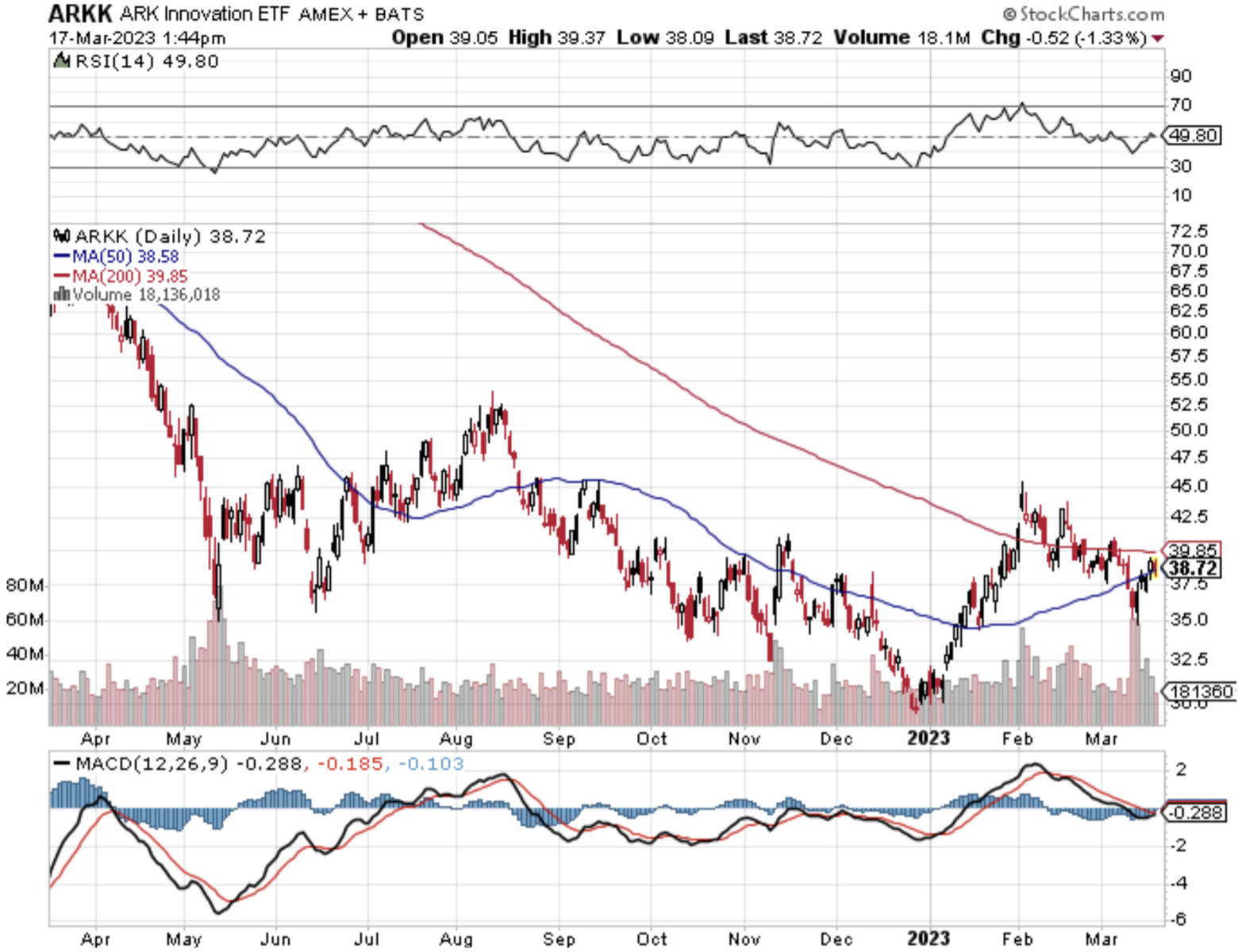
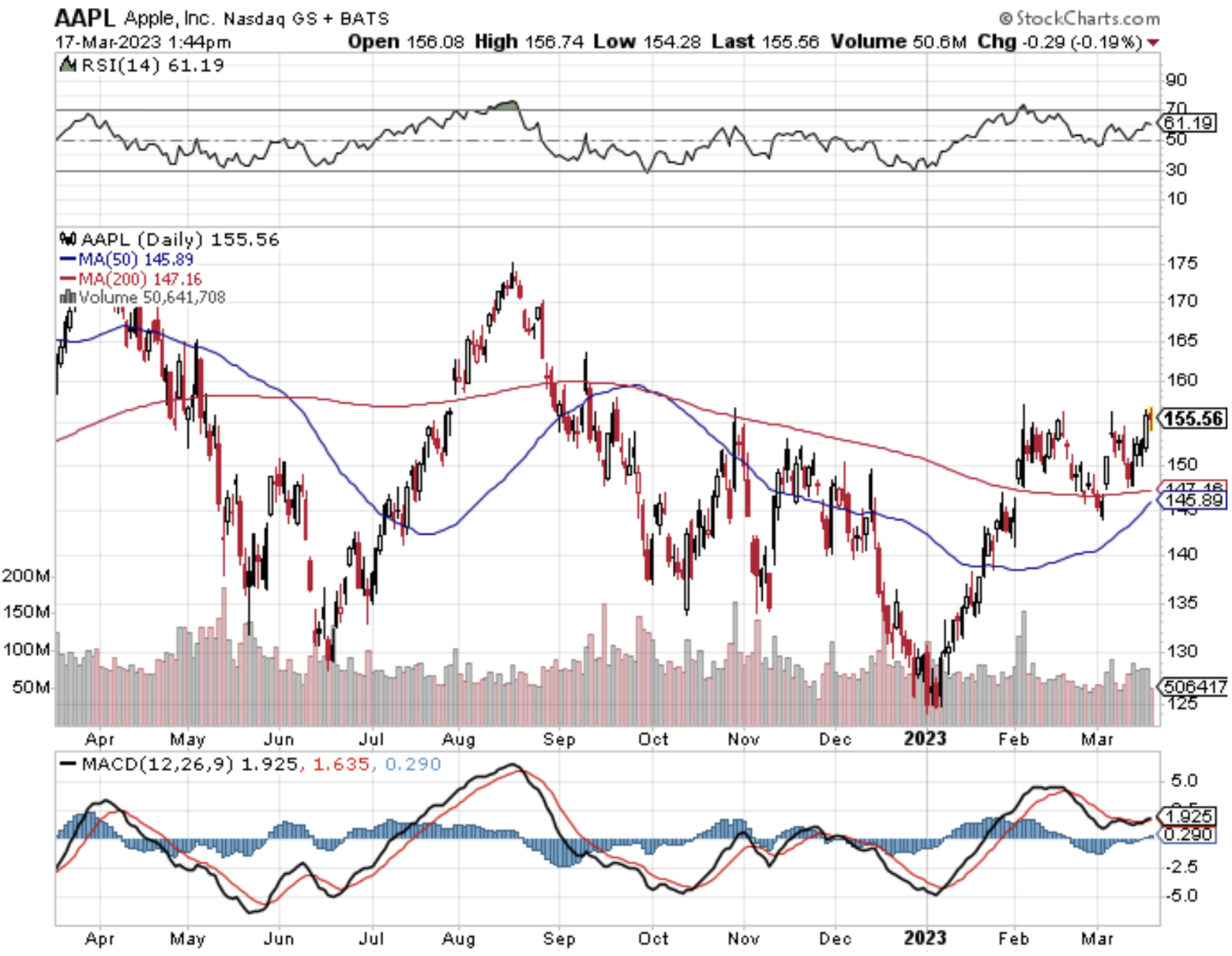
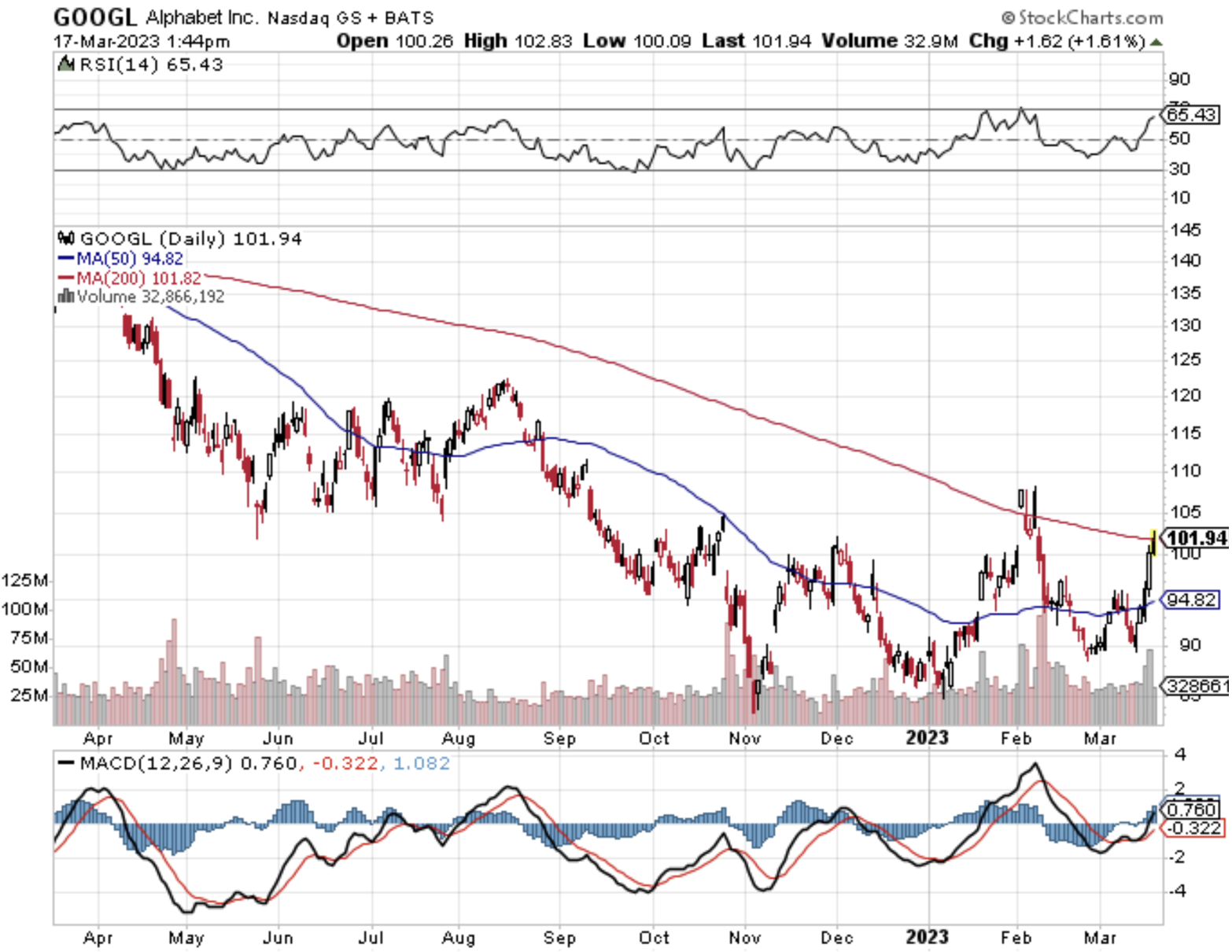
Mad Hedge Technology Letter
November 23, 2022
Fiat Lux
Featured Trade:
(BETWEEN A ROCK AND A HARD PLACE)
(AAPL), (ARKK), (OECD)
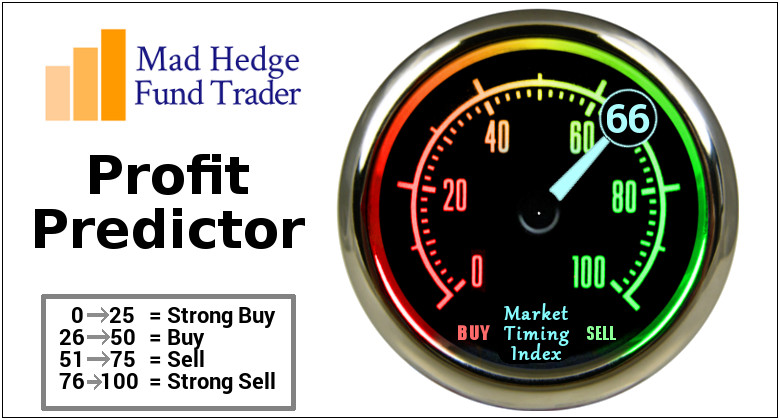
I’m not saying all tech “gurus” are that brain-dead and I’m not saying that all tech companies are that bad, but tech is operating in a middle ground right now between good and bad.
That’s really where we are for tech stocks.
Cathy Wood has reiterated her $1 million per Bitcoin price target for 2030. If you don’t remember who Wood is, she is the tech growth evangelist that presides over a popular tech ETF called ARKK, and the only reason she gets these funds to invest is because of the high inflows of retail investors believing her fantasies like buying Coinbase after systemic risk to crypto increasing wildly.
Betting the farm right now on tech is not the right thing to do.
Tech was supposed to outperform easily, heading into the December 13th CPI report that records inflation, precisely because inflation was the number one risk to the tech market and inflation was creeping lower.
However, arbitrary lockdowns in China have accelerated and the recent weakness in technology stocks implies a global growth scare with reports today of Chinese workers violently protesting at Apple’s main iPhone factory run by Foxconn in Henan province, China.
The global growth scare has frightened off tech investors in the short term.
American tech companies benefit disproportionally globally to other domestic American companies and what goes on outside national borders is completely relevant to the sentiment of Silicon Valley tech stocks.
We are in a weird middle ground where a global growth scare has bolted to the fore, but high inflation is still a wrecking ball to many economies and is slightly ticking down.
In this type of gridlock narrative, the US Central Bank cannot start easing because the economy isn’t weak enough to “save.”
Then to cap it off, to lower rates, the US really needs a recession and while tech has suffered 100s of thousands of job losses so far, the broader economy is holding up quite well, even with a stealth tax called inflation on consumers, and incremental growth is expected for not only the United States in 2023 but the whole world.
The latest OECD report foresees U.S. inflation remaining well above the Fed’s 2% annual target next year and into 2024.
The OECD’s forecast for the 19 European countries expects the eurozone to collectively manage just 0.5% growth next year before accelerating slightly to 1.4% in 2024.
The OECD expects the United States, the world’s largest economy, to grow just 1.8% this year (down drastically from 5.9% in 2021), 0.5% in 2023, and 1% in 2024.
This spells out to me that not much will radically change from 2022.
Barely scraping along and avoiding a recession means that the Fed won’t have a license to suddenly pivot.
That means there will be a delay in introducing meaningful easing and by that, I mean half-point or full-point rate cuts perhaps to the end of 2023 and maybe even 2024.
I believe we are range bound with tech stocks rallying on perceived pivot front-running.
However, any rally will come down to earth with tech earnings decelerating and growth scares occurring periodically.
In short, we are losing precious time for the last gangbuster rally into year-end for tech shares, and it is increasingly probable that the “year-end rally” already took place.
We need a capitulation for things to pick up steam and that obviously won’t happen when Cathy Wood is screaming for $1 million per Bitcoin in the tech sector.
We need to flush out the weak hands first and she’s next on the list after the crypto implosion.
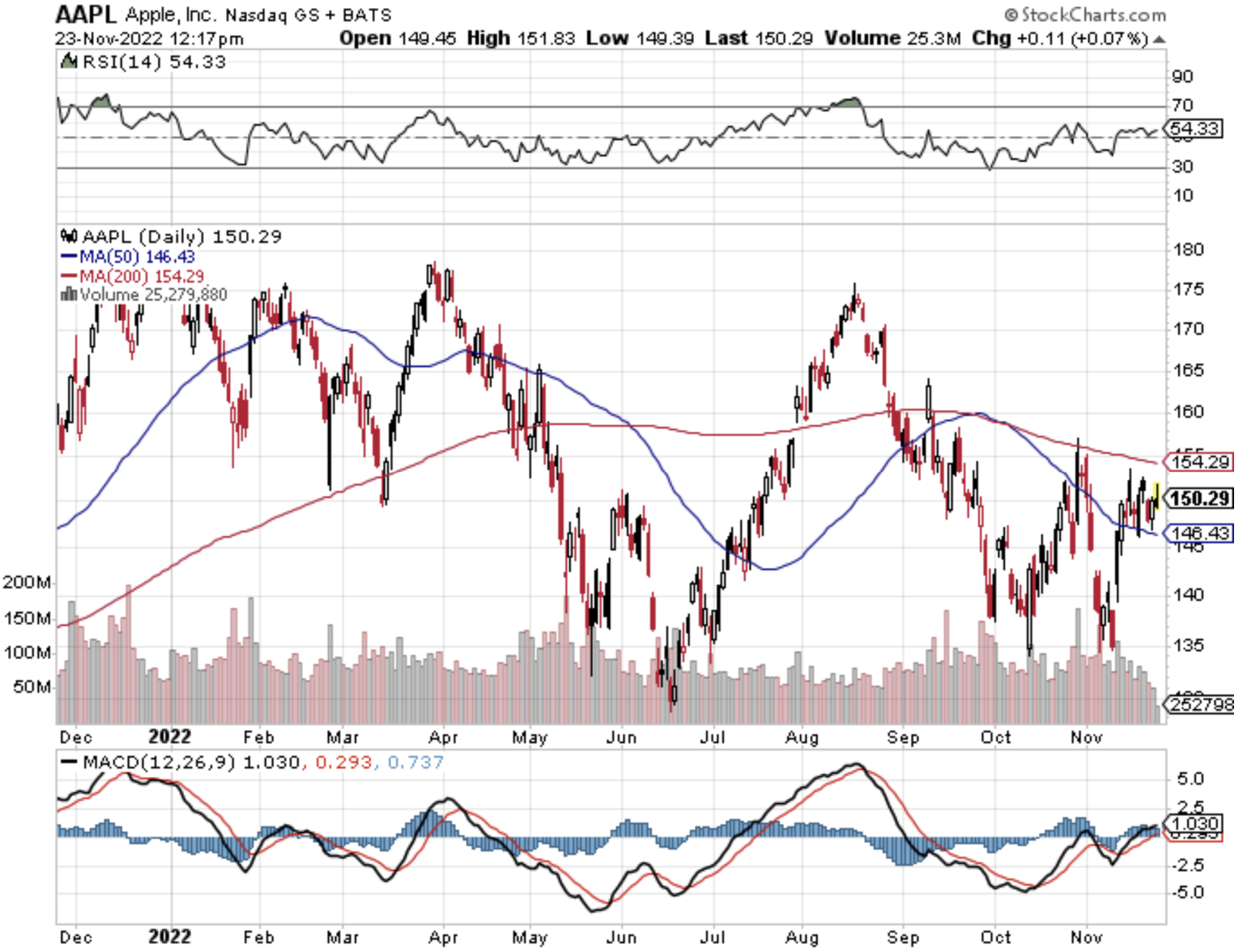
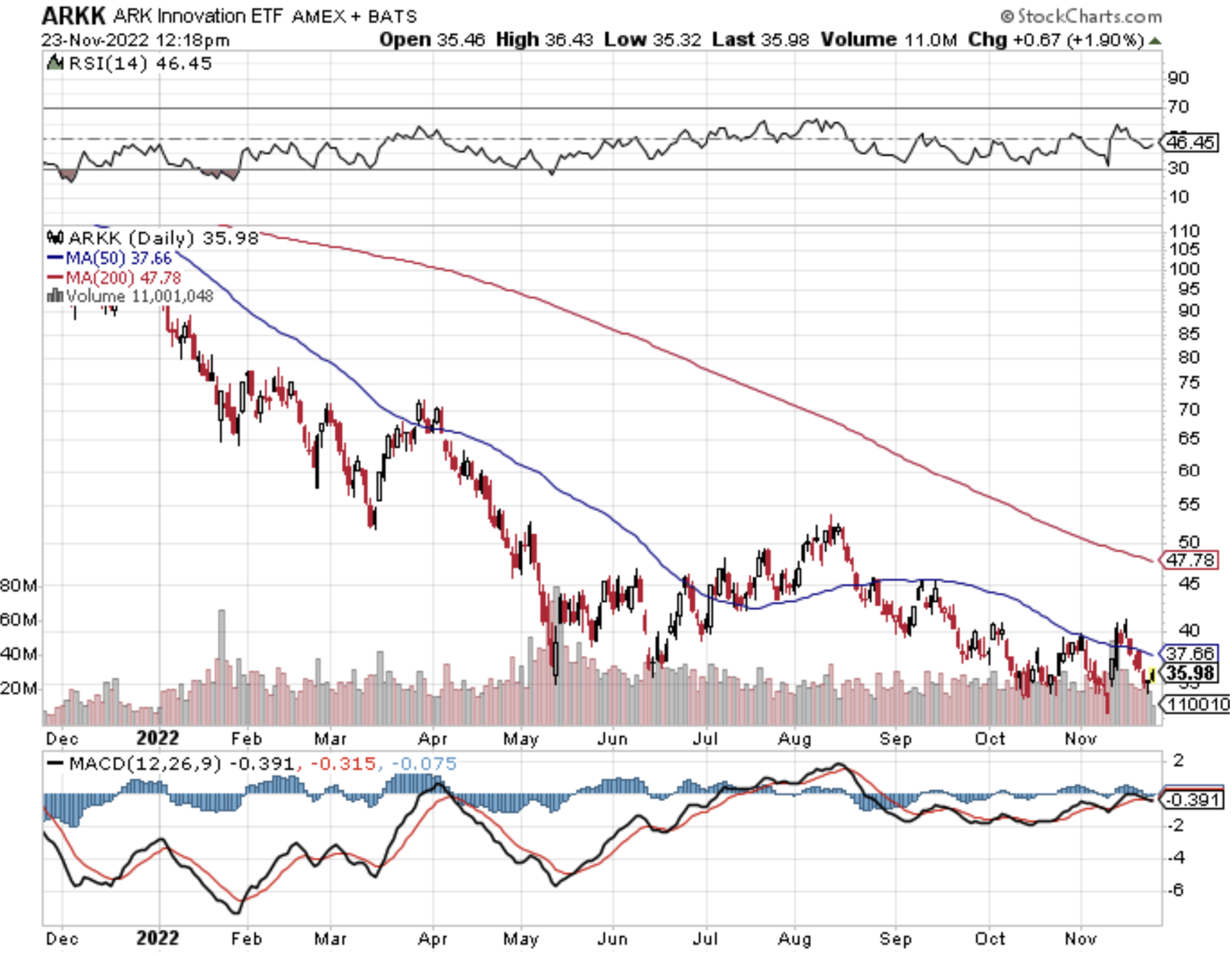
Legal Disclaimer
There is a very high degree of risk involved in trading. Past results are not indicative of future returns. MadHedgeFundTrader.com and all individuals affiliated with this site assume no responsibilities for your trading and investment results. The indicators, strategies, columns, articles and all other features are for educational purposes only and should not be construed as investment advice. Information for futures trading observations are obtained from sources believed to be reliable, but we do not warrant its completeness or accuracy, or warrant any results from the use of the information. Your use of the trading observations is entirely at your own risk and it is your sole responsibility to evaluate the accuracy, completeness and usefulness of the information. You must assess the risk of any trade with your broker and make your own independent decisions regarding any securities mentioned herein. Affiliates of MadHedgeFundTrader.com may have a position or effect transactions in the securities described herein (or options thereon) and/or otherwise employ trading strategies that may be consistent or inconsistent with the provided strategies.
This site uses cookies. By continuing to browse the site, you are agreeing to our use of cookies.
OKLearn moreWe may request cookies to be set on your device. We use cookies to let us know when you visit our websites, how you interact with us, to enrich your user experience, and to customize your relationship with our website.
Click on the different category headings to find out more. You can also change some of your preferences. Note that blocking some types of cookies may impact your experience on our websites and the services we are able to offer.
These cookies are strictly necessary to provide you with services available through our website and to use some of its features.
Because these cookies are strictly necessary to deliver the website, refuseing them will have impact how our site functions. You always can block or delete cookies by changing your browser settings and force blocking all cookies on this website. But this will always prompt you to accept/refuse cookies when revisiting our site.
We fully respect if you want to refuse cookies but to avoid asking you again and again kindly allow us to store a cookie for that. You are free to opt out any time or opt in for other cookies to get a better experience. If you refuse cookies we will remove all set cookies in our domain.
We provide you with a list of stored cookies on your computer in our domain so you can check what we stored. Due to security reasons we are not able to show or modify cookies from other domains. You can check these in your browser security settings.
These cookies collect information that is used either in aggregate form to help us understand how our website is being used or how effective our marketing campaigns are, or to help us customize our website and application for you in order to enhance your experience.
If you do not want that we track your visist to our site you can disable tracking in your browser here:
We also use different external services like Google Webfonts, Google Maps, and external Video providers. Since these providers may collect personal data like your IP address we allow you to block them here. Please be aware that this might heavily reduce the functionality and appearance of our site. Changes will take effect once you reload the page.
Google Webfont Settings:
Google Map Settings:
Vimeo and Youtube video embeds:
